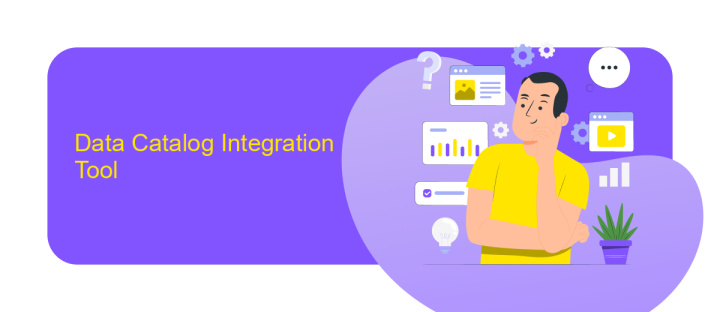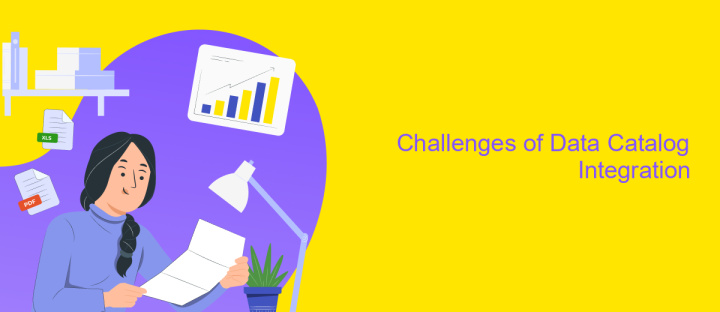Data Catalog Integration Tool
In today's data-driven world, efficiently managing and accessing vast amounts of information is crucial for businesses. A Data Catalog Integration Tool serves as a vital solution, enabling seamless organization, discovery, and governance of data assets. By integrating diverse data sources into a unified catalog, this tool enhances data accessibility, improves decision-making, and ensures compliance with data governance policies.
Introduction
The integration of data catalogs has become a crucial aspect of modern data management, enabling organizations to efficiently organize, discover, and govern their data assets. A Data Catalog Integration Tool serves as a bridge, connecting various data sources and systems, thus facilitating seamless data flow and enhancing data accessibility across the enterprise.
- Streamlined data discovery and access
- Enhanced data governance and compliance
- Improved data quality and consistency
- Facilitated collaboration among data users
- Accelerated data-driven decision-making
By leveraging a Data Catalog Integration Tool, businesses can unlock the full potential of their data ecosystems. Such tools not only simplify the process of data integration but also ensure that data remains accurate, up-to-date, and readily available for analysis. This ultimately leads to better insights, more informed decisions, and a competitive edge in the market.
Data Catalog Integration Tool

Data Catalog Integration Tool is essential for organizations aiming to streamline data management and improve accessibility. By integrating various data sources into a unified catalog, businesses can ensure that data is consistently organized, easily searchable, and readily available for analysis. This tool supports diverse data formats and platforms, making it a versatile solution for complex data environments.
One effective way to set up these integrations is by using services like ApiX-Drive. ApiX-Drive facilitates seamless connections between different data sources and your data catalog, automating the data flow and reducing manual effort. It supports a wide range of applications and databases, ensuring that your data catalog remains up-to-date and comprehensive. With ApiX-Drive, you can focus on data analysis and decision-making, rather than the intricacies of data integration.
Benefits of Data Catalog Integration

Integrating a data catalog tool into your data management system offers numerous advantages that can significantly enhance data governance and usability. By centralizing metadata, data catalogs provide a comprehensive view of an organization's data assets, making it easier to discover, understand, and manage data across various sources.
- Improved Data Discovery: Data catalogs enable users to quickly locate and access the data they need, reducing time spent searching for information.
- Enhanced Data Governance: With a data catalog, organizations can maintain better control over data quality, compliance, and security policies.
- Increased Collaboration: Data catalogs facilitate collaboration among data scientists, analysts, and other stakeholders by providing a shared understanding of data assets.
- Streamlined Data Management: By consolidating metadata, data catalogs simplify the process of managing and maintaining data across multiple platforms.
- Insightful Analytics: Data catalogs provide valuable context and lineage information, enabling more accurate and insightful data analysis.
Incorporating a data catalog integration tool is a strategic move that can drive efficiency and innovation within an organization. It not only enhances the ability to manage and utilize data effectively but also supports better decision-making and operational excellence.
Challenges of Data Catalog Integration

Integrating a data catalog into an existing data ecosystem presents several challenges that organizations must navigate to ensure seamless functionality. One of the primary difficulties is achieving compatibility between the data catalog and various data sources, which often have different formats, structures, and protocols.
Another significant challenge is the scalability of the data catalog system. As data volumes grow, the catalog must efficiently manage and index vast amounts of metadata without compromising performance. This requires robust infrastructure and advanced indexing techniques.
- Data source compatibility issues
- Scalability challenges
- Data quality and consistency
- Security and compliance concerns
- User adoption and training
Ensuring data quality and consistency is also a critical hurdle. Inconsistent metadata can lead to inaccurate data insights and poor decision-making. Additionally, maintaining security and compliance while integrating sensitive data requires stringent measures and constant monitoring. Finally, user adoption and training are essential for the successful implementation of a data catalog, as users need to understand and trust the system to leverage its full potential.
Best Practices for Data Catalog Integration
Effective data catalog integration begins with a clear understanding of your organization's data landscape. Start by identifying and documenting all data sources, including databases, data lakes, and external APIs. Ensure that your data catalog supports a wide range of data formats and types to accommodate diverse sources. Regularly update and validate your metadata to maintain data accuracy and consistency. Establish robust data governance policies to manage data quality, privacy, and compliance.
Utilize integration tools like ApiX-Drive to streamline the connection between your data catalog and various data sources. ApiX-Drive offers a user-friendly interface and supports numerous integrations, making it easier to automate data synchronization and reduce manual efforts. Leverage its capabilities to set up automated workflows that ensure real-time data updates in your catalog. Additionally, monitor the performance of your integrations and address any issues promptly to ensure seamless data flow across your organization.
FAQ
What is a Data Catalog Integration Tool?
Why is integrating a data catalog important?
How does a Data Catalog Integration Tool enhance data governance?
Can a Data Catalog Integration Tool be automated?
What are the key features to look for in a Data Catalog Integration Tool?
Strive to take your business to the next level, achieve your goals faster and more efficiently? Apix-Drive is your reliable assistant for these tasks. An online service and application connector will help you automate key business processes and get rid of the routine. You and your employees will free up time for important core tasks. Try Apix-Drive features for free to see the effectiveness of the online connector for yourself.

